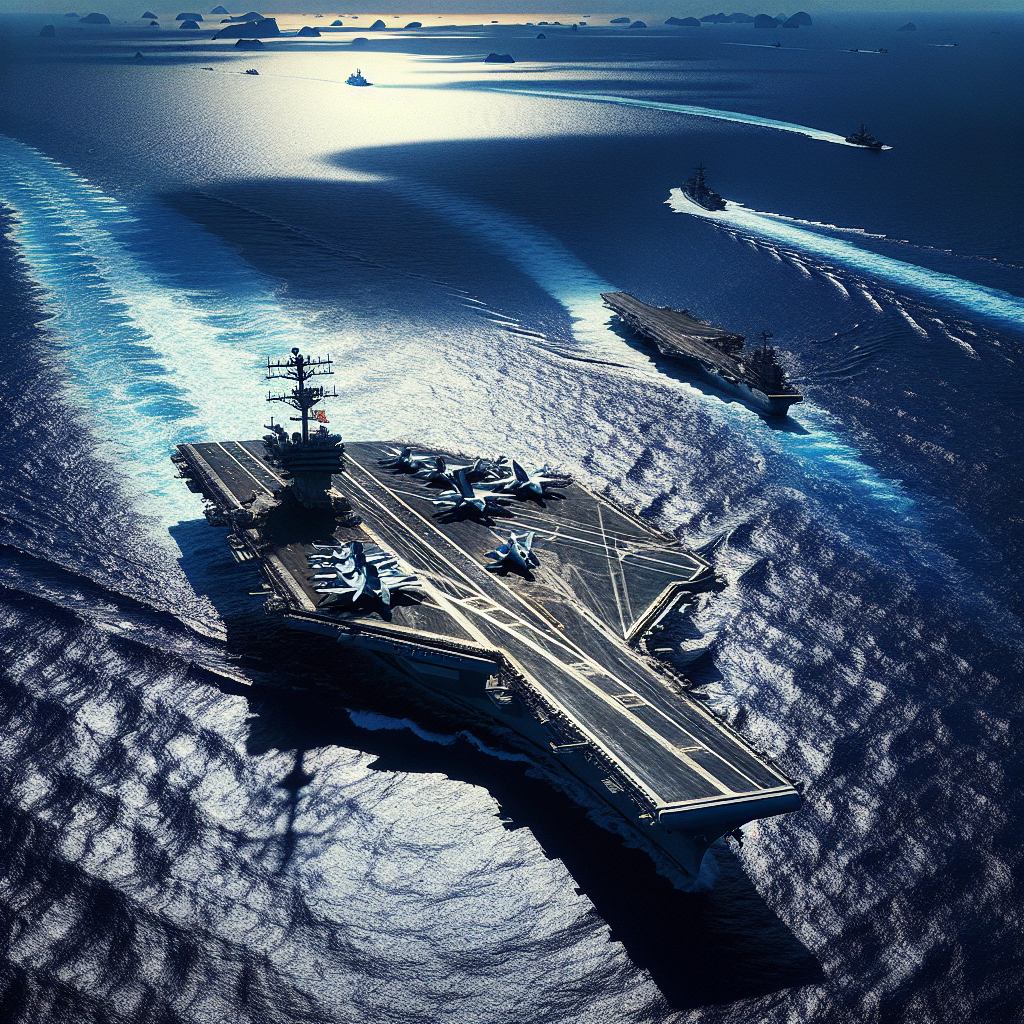Satellite imagery shows that the U.S. aircraft carrier USS Nimitz is currently navigating through the waters of the South China Sea, while the Chinese navy is expanding its activities in the Pacific, with the Liaoning aircraft carrier crossing the Second Island Chain for the first time.
The U.S. Seventh Fleet stated in a release to NewsWeek that it is the largest forward-deployed naval fleet in the U.S., consisting of over 50 vessels and 150 aircraft. The fleet, together with American allies and partners, presents a “significant combat power” in the Western Pacific and Indian Ocean regions.
The USS Nimitz aircraft carrier fleet began its regular deployment mission to the Western Pacific in late March. After a brief passage through the Strait of Malacca, the nuclear-powered carrier fleet returned to the South China Sea in late May.
The South China Sea is a disputed area between China and neighboring countries. The deployment of the U.S. aircraft carrier fleet in the South China Sea coincides with the Chinese navy deploying two aircraft carriers simultaneously in the Western Pacific. The Japanese government confirmed that the Liaoning carrier crossed the eastern waters of the Sulawesi Islands, executing carrier-based aircraft takeoff and landing missions, crossing the “Second Island Chain.”
Satellite images taken on Sunday, June 8th, shared by open-source analyst @MT_Anderson on X, show the USS Nimitz aircraft carrier operating in the West Philippine Sea, approximately 167 miles northeast of the disputed Scarborough Shoal.
Since 2012, this area has been under Chinese control, located about 138 miles west of Luzon Island in the Philippines. Philippine authorities use the term “West Philippine Sea” to refer to a part of the South China Sea within the Philippines’ 230-mile exclusive economic zone.
Official photos released on June 2nd show the USS Nimitz aircraft carrier sailing in the South China Sea. According to the photo description, the deployment of this aircraft carrier fleet demonstrates the U.S. Navy’s firm commitment to maintaining a free and open Indo-Pacific region.
Meanwhile, photos taken by local ship observers show the second U.S. aircraft carrier, the USS George Washington, deployed in the Western Pacific, leaving its home port near Tokyo, Japan, on Tuesday, June 10th.
On June 4th, the USS George Washington aircraft carrier returned to Yokosuka Naval Base near Tokyo after completing a “routine mission” in the nearby waters.
The U.S. Seventh Fleet stated in a release to NewsWeek: “The U.S. Pacific Fleet is at sea every day to protect the safety, freedom, and prosperity of the United States and its allies and partners, fulfilling our commitment to maintaining peace and stability in the region.”
Commander of the USS Nimitz Carrier Strike Group, U.S. Navy Rear Admiral Maximilian Clark, stated in April, “The forward deployment of the carrier strike group hones our resolve to maintain combat readiness at sea, poised to provide extensive military capabilities for our country and leaders to address any crisis or contingency.”
Whether the USS Nimitz aircraft carrier strike group will depart the South China Sea and head to the Philippine Sea in the eastern Philippines to conduct joint exercises with the USS George Washington carrier strike group is currently unclear.

